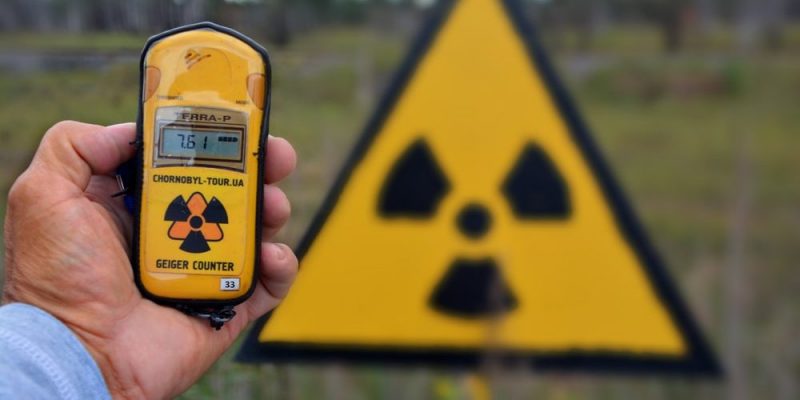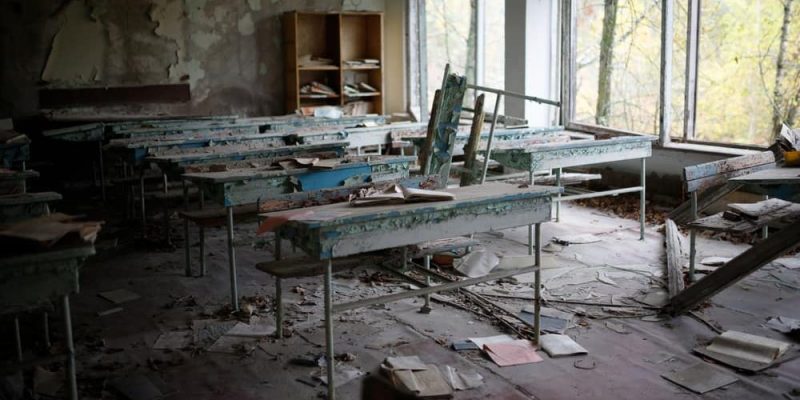We explain what radioactive contamination is, its causes, consequences and examples. Also, how it can be prevented.

What is radioactive contamination?
It is known as radioactive or radioactive contamination. the dispersion into the environment of unstable chemical materials, capable of emitting harmful electromagnetic particles in a physical-chemical phenomenon known as ionizing radiation.
This type of radioactive materials can occur in nature under very specific and infrequent conditions, but are mostly the result of artificial chemical reactions carried out in human facilities, such as nuclear power generation plants or scientific experimentation laboratories.
Radioactive contamination occurs, then, when these radioactive chemical elements are dispersed in the environment, whether in water, soil or the air itself, and subsequently penetrate the bodies of living beings, transmitting along the chain. trophic.
Exposure to radioactivity can cause deep and structural damage to the body altering, for example, DNA and causing unpredictable mutations, transmittable to offspring. For this reason, areas contaminated with radioactive material are incompatible with life for a long time, given that these chemical elements can be dangerous for centuries.
Some of the most common radioisotopes (dangerous versions) in cases of radioactive contamination are uranium-235 (235U), polonium-210 (210Po), potassium-40 (40K), plutonium-239 (239Pu), curium-244 (244cm), americium-241 (241Am) or cobalt-60 (60Co). Depending on the element in question, the levels of danger and duration of the contamination may be worse.
See also: Chemical pollution
Causes of radioactive contamination

Radioactive contamination is rare, since natural levels of exposure to these materials in the atmosphere or soil are so low that their chances of causing large-scale damage are minimal. In fact, pollution is rarely talked about in this sense.
So radioactive contamination events in history have always been the responsibility of humans, and can be classified into four different categories:
- Medical waste contamination. Radioactive materials have uses in medicine, as part of radical treatments against certain diseases (such as radiotherapy) or as radical disinfection mechanisms, since when irradiated, the materials are sterilized: not even bacteria can survive certain doses of radioactivity. If these dangerous elements are not properly disposed of, they can enter the environment and act as polluting elements.
- Pollution due to industrial reasons. In this case we are referring mainly to nuclear energy, that is, to obtaining electricity through controlled exothermic nuclear reactions. These reactions, at best, cause a low environmental impact, but they leave long-standing radioactive byproducts, which require appropriate storage. Negligence in their handling, or accidents due to human error or natural disasters, can release these elements into the environment.
- Military-related pollution. Knowledge of nuclear reactions was put to the test, as history tells it, in order to achieve a lethal military weapon: the atomic bomb. It is an uncontrolled nuclear chain reaction, of immense destructive power and which subsequently releases radioactive material at the site of its detonation.
Consequences of radioactive contamination
The consequences of radioactive contamination are extremely serious. radioactive substances have a harmful effect on all forms of life and can also penetrate their bodies through food or water, and continue to emit harmful particles from within.
By serving as food for other living beings, contaminated plants or animals perpetuate pollution in a destructive chain that can last for hundreds of years that the radioactive element takes to stabilize.
Therefore, in areas contaminated in this way, all inhabitants are evacuated, including local fauna, to limit contact with hazardous materials and prevent them from being transported to other environments. Containing contaminated water or dealing with contaminated soil can be even more problematic, but taking appropriate measures and procedures can limit the damage and even decontaminate the less affected regions.
Examples of radioactive contamination

Some examples of radioactive contamination are:
- The Chernobyl accident. Occurring on April 26, 1986 at the Vladimir Ilyich Lenin nuclear power plant in the city of Pripyat, Ukraine, then part of the Soviet Union, it is the worst nuclear accident in history. It occurred when the core of reactor 4 of the plant overheated and exploded twice in succession, catching fire in the process, and emitting a cloud of radioactive materials that ascended into the atmosphere, full of uranium dioxide, boron carbide, europium oxide, erbium, zirconium and graphite, and which affected around 13 countries in Europe.
- The bombing of Hiroshima and Nagasaki. The event that ended World War II and caused Japan to surrender was the bombing of these two cities with atomic bombs on August 6 and 9, 1945. The explosion killed between 105,000 and 120,000 people, 15 to 20 % of which due to radioactive poisoning. These deaths occurred in the days following the bombing, because the region was highly contaminated.
- The Fukushima accident YO It occurred on March 11, 2011 in Japan, as a result of an earthquake of magnitude 9 on the seismological magnitude scale at the time, and especially the tsunami that it caused afterwards. The Fukushima I power plant was particularly affected by the gigantic 14-meter-high wave, which destroyed the auxiliary electricity generators (diesel) that at that time powered the plant's coolant pumps, since nuclear fission had stopped. immediately shut down upon sensing the earthquake. When the coolant flow failed, three hydrogen explosions and three nuclear meltdowns occurred, releasing radioactive materials into the environment between March 12 and 15.
How to prevent radioactive contamination?
Preventing radioactive contamination is complicated, and has mainly to do with proper disposal of hazardous waste whatever its origin.
The only known material that can act as an insulator against ionizing radiation is lead, so this metal is often used to make containers and coatings that contain the emission of toxic particles. Unfortunately, such material is not very durable, especially compared to the long periods of activity of radioactive materials.
Another element to take into consideration is the so-called nuclear security, that is, the set of control, prevention and monitoring measures for industrial activities medical or any type that produces radioactive waste. The stricter the security, the lower the risks of contaminating the environment.
Continue with: Chemical risk
References
- “Radioactive contamination” on Wikipedia.
- “Radioactive contamination kills” in Green Peace Spain.
- “Radioactive contamination” in WASTE Magazine.
- “Radioactive pollution” in Wiley Online Library.
- “Radioactive waste” in The Encyclopaedia Britannica.




